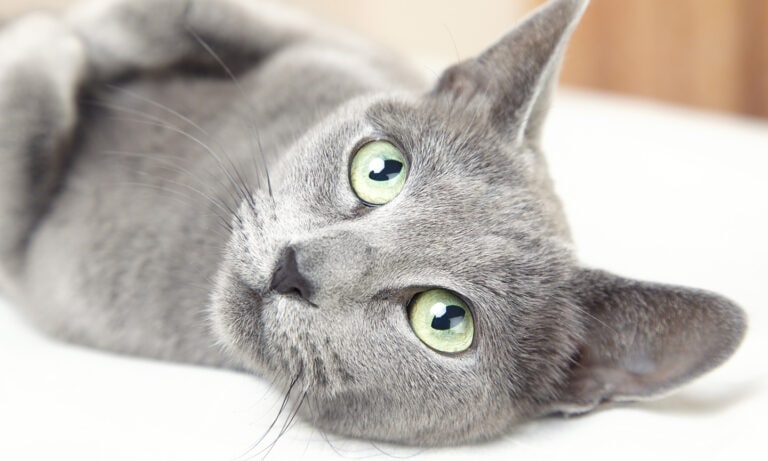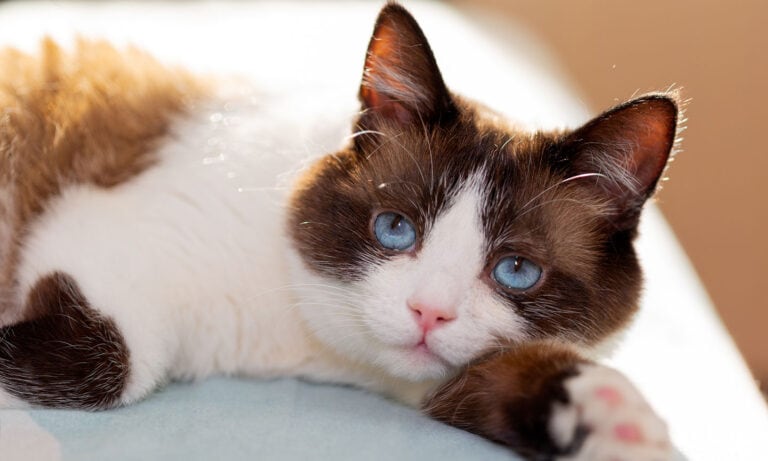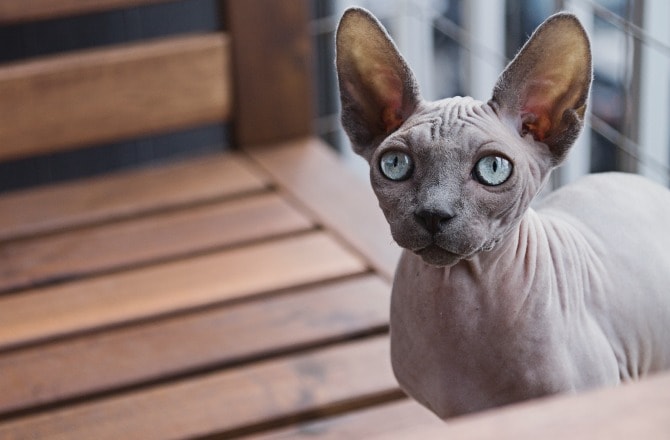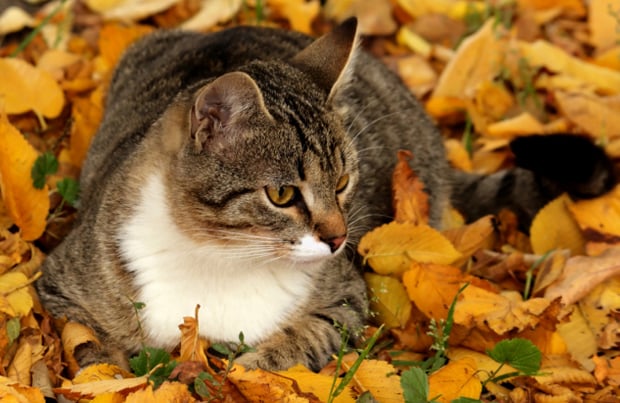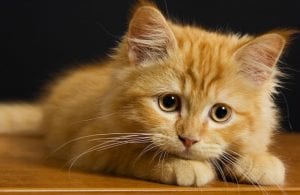One of the oldest and naturally purest breeds found today is the Korat. The original descent is not known, nor is it known when this breed broke from the jungle to make its place with humans. The standards for the Korat, however, are strict.
Korat Physical Characteristics
The Korat is small to medium in size, light in appearance, but solid and heavier than its appearance suggests. It is also muscular with smooth curves, but is not too compact. A slow maturing cat, the Korat does not reach its full potential until it is a few years old, and is known for being an ugly duckling in its younger years.
Another of the Korat’s more recognizable traits are its large, round, luminescent green eyes and heart-shaped head. Newborn Korat kittens are born with blue eyes, gradually changing to a bright amber and eventually, over the next two to four years, the eyes become a brilliant green.
Color(s)
There is no outcrossing allowed, and no color or length variations. Ideally, the Korat should have blue-silver color and be free from all markings. Its hair begins at the root in a light blue color, darkening along the shaft, into a slate grey-blue color, and tipping at the end in silver. These silver tips give the cat’s body a phosphorous-like effect, glowing radiantly.
Although the Cat Fanciers Association will only accept the blue-silver Korat—the only acceptable color for the Korat name—it is far from the only color the Korat is born in. There are known to be lilac-colored and white-colored Korats, as well as those with marked fur. These cats may exhibit the same personality qualities of the Korat breed, but registering a Korat that is anything other than blue-silver is not allowed.
Coat
Short, single and close-lying
Korat Personality and Temperament
Activity Level
Moderate
Positives
This is a social cat that immensely enjoys being with people. It bonds well with families and is affectionate.
Things to Consider
The Korat appreciates cuddling and playing, as long as it is the center of attention. It generally gets along with other animals, but has a tendency to become jealous when other pets receive too much love from its owner.
Korat Care
Ideal Living Conditions
An attention-seeker, it will climb on your lap or arms to show its love and enjoys being with its people. It will also memorize the tactics that rewarded it with attention. Therefore, discourage any negative or undesirable behavior.
Special Requirements
Though not as talkative or even as audible as the Siamese, the Korat will make itself known when it is unhappy or being bothered.
Korat Health
The Korat has a life span of 10-15 years and is generally very healthy.
Korat History and Background
The Korat made its first illustrated appearance in a tamra maew, a Thai book of cat poems, written between the 14th and 18th centuries. The Smud Khoi of Cats, written between the 19th and 20th centuries, also lists the Korat among 17 other cats, and is regarded as good luck.
“The hairs are smooth with roots like clouds and tips like silver
The eyes shine like dew drops on a lotus leaf.”
The writer of this highly poetic description of the Korat—named Mal-Ed in the Smud Khoi, today referred to as the Si-sawat—also wrote that the Korat is one of a group of cats created by skilled Heremits, for the purpose of bringing fortune to their human owners. With a deep and lustrous coat of blue-grey, it is no wonder the Korat was, and is, thought to be an auspicious embodiment of prosperity.
The Korat has held its cherished place in Thai culture as a prosperity, health, and good luck charm. It is also seen as a benefit for those beginning a new life—the Korat is a traditional wedding gift, a promise of fortune, fertility, and plenty for the new couple. Another tradition that still holds for true for the breed is that one cannot generally buy a Korat, but must receive one, or a pair, as a gift.
The Korat’s introduction to the American people came about in 1959, when cat enthusiast Jean Johnson received a pair of Korats from a friend in Bangkok, Thailand. Jean had been staying in Thailand with her husband for three years, and while first avid about Siamese cats, she became drawn to the Korat.
Unfortunately, she was stymied by tradition. Jean discovered that Korats belonged mainly to the upper classes of Thailand—nobility, high ranking officials, etc.—and that even they were gifted the cats. Jean and her husband left Thailand in 1954 for another assignment in Southeast Asia, leaving behind a request for a pair of Korats should they be found.
Five years later, already back in the United States, she received notice from her Thai friend that two Korat kittens were on their way to her, later naming them Nara and Dara. Thrilled with the addition to her family, Johnson encouraged the pair to mate.
Outcrossing them with her resident blue point Siamese cats to avoid inbreeding, she then removed any kittens with Siamese characteristics from the breeding program, thereby establishing the first American Korat family.
More Korats were brought to America from Thailand in the 1960s, and by 1966 the Cat Fancier’s Association (CFA) accepted the Korat for championship competition.
The Korat has not yet achieved the level of Best Cat in the U.S., but it does consistently win places in competitions. The first Korat to be honored at the national level was Munn Kette in 1981, which took seventh place in competition.
The Korat is a rare, or minority breed, in America mainly due to its small gene pool. And because they are also limited their homeland of Thailand, breeders are unable to enhance the gene pool with imports. Perhaps, as tradition would dictate, limits on breeding and population are quietly imposed. This could be so the upper hierarchy, or those fortunate enough to have been gifted a Korat, are only able to receive the cat.
Whatever the reason, it has made the Korat a rare, highly valued, and much cherished family member.
By: Chewy Editorial
Share:

